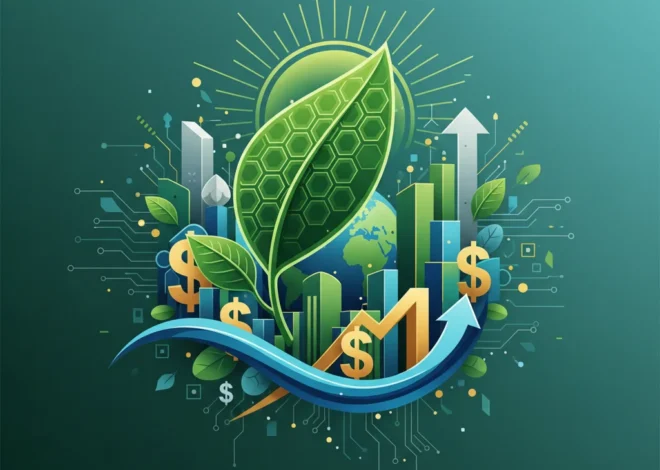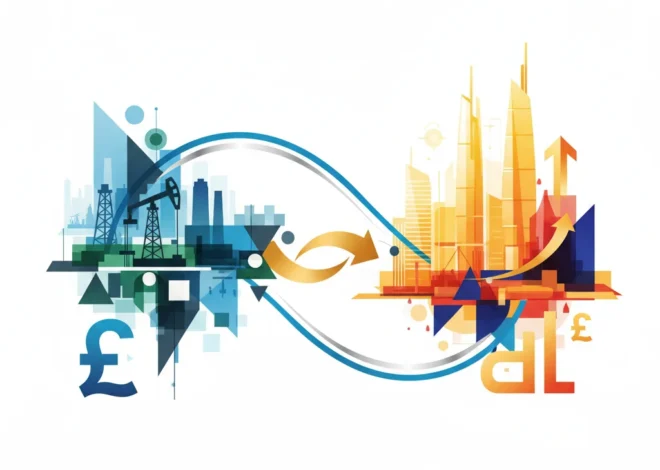
The Green Revolution on the Balance Sheet: How an Egyptian Startup is Redefining Energy, Economics, and Investing
In a world grappling with volatile energy markets, persistent inflation, and the urgent call for sustainable practices, the most profound innovations often emerge from unexpected corners. While headlines may be dominated by Silicon Valley behemoths, a quiet revolution is taking place in Cairo. An Egyptian green tech firm, Saving System, has developed a device that promises a simple yet powerful value proposition: to significantly cut electricity bills for businesses. This isn’t just a story about a clever piece of hardware; it’s a microcosm of a seismic shift in global finance, investing, and the very economics of running a business.
For decades, energy has been a line item on the profit and loss statement that executives simply accepted—a cost of doing business, subject to the whims of geopolitical tensions and commodity markets. Today, that paradigm is being shattered. Energy management has transformed from a passive expense into an active strategy for financial resilience, competitive advantage, and corporate responsibility. This Egyptian innovation is a testament to that shift, signaling a new era where sustainability and profitability are not just aligned, but inextricably linked.
The Macro-Economic Catalyst: Why Energy Efficiency is the New Bull Market
To understand the significance of a company like Saving System, we must first appreciate the economic landscape in which it operates. The global economy is navigating a perfect storm. Supply chain disruptions, geopolitical conflicts, and a post-pandemic surge in demand have sent energy prices soaring. According to the International Energy Agency (IEA), global electricity prices have remained stubbornly high, placing immense pressure on businesses of all sizes. For a small business, a sudden 30% spike in energy costs can be the difference between profit and closure. For a large industrial manufacturer, it can mean millions in eroded margins.
This reality has turned energy efficiency from an environmental “nice-to-have” into a core tenet of modern financial strategy. It represents one of the few deflationary forces available to a Chief Financial Officer. While you cannot control the price of oil or natural gas on the open market, you can control how much of it your organization consumes. This is where the intersection of green technology and financial technology (fintech) becomes incredibly powerful. Innovations are no longer just about generating green energy, but also about intelligently conserving it.
This shift has profound implications for the world of investing. The discipline of Environmental, Social, and Governance (ESG) investing has moved from a niche interest to a mainstream force, with global sustainable fund assets reaching trillions of dollars. Investors are increasingly scrutinizing companies not just for their quarterly earnings, but for their long-term resilience. A company that actively manages its energy consumption is a company that is mitigating risk, improving its operational efficiency, and, ultimately, protecting its position in the stock market.
From Napkin Sketch to Market Dominance: The Financial Trajectory of EasyJet at 30
A Deep Dive into the Business Case: Beyond Savings to Strategic Value
The device from Saving System, as reported by the BBC, is designed to help firms save electricity. While the specific technical details are proprietary, such technologies typically operate on principles like power factor correction, voltage optimization, or intelligent load balancing using IoT sensors. Regardless of the method, the financial impact is what captures the attention of business leaders and finance professionals.
Let’s model the potential financial impact for a hypothetical mid-sized manufacturing facility. The benefits extend far beyond the direct reduction in utility payments.
Here is a breakdown of the value proposition that technologies like this offer:
| Financial/Operational Metric | Impact of Energy Efficiency Technology |
|---|---|
| Operating Expenses (OpEx) | Direct reduction in monthly utility bills, leading to improved cash flow and higher operating margins. |
| Return on Investment (ROI) | Typically offers a rapid ROI, often within 12-36 months, making it a financially compelling capital expenditure. |
| Asset Longevity | Optimized power quality can reduce wear and tear on machinery, extending the life of expensive equipment and reducing maintenance costs. |
| ESG Score & Investor Relations | Demonstrable commitment to sustainability improves ESG ratings, attracting a wider pool of institutional capital and lowering the cost of borrowing. |
| Brand & Market Positioning | Enhances corporate reputation, appealing to environmentally conscious consumers and B2B partners. |
This holistic view demonstrates that investing in energy efficiency is not merely a cost-cutting measure; it is a strategic investment in the company’s long-term health. It impacts everything from the core finance of the company to its attractiveness in public and private markets.
The Emerging Market Advantage: Innovation Forged in Necessity
It is no coincidence that a company like Saving System is emerging from Egypt. Emerging economies often face a unique set of pressures that act as powerful incubators for innovation. In many of these regions, energy infrastructure can be less stable, and businesses are acutely sensitive to price fluctuations. This “necessity is the mother of invention” environment forces a focus on practical, robust, and cost-effective solutions.
Furthermore, governments in these regions are increasingly promoting green initiatives as a path toward economic diversification and energy independence. According to the World Bank, Egypt has been actively pursuing a green growth strategy, recognizing that sustainable development is key to its future prosperity. This creates a supportive ecosystem for startups in the green tech space, with potential access to grants, favorable regulations, and public-private partnerships.
For global investors, this represents a significant opportunity. While the trading floors in New York and London focus on established markets, the next wave of growth in green technology may well come from Cairo, Nairobi, or Mumbai. These markets offer the potential for outsized returns precisely because they are solving fundamental, real-world problems at scale.
Paradise Under Pressure: A Financial Deep Dive into the Tourism Sector's Economic Crisis
The Future Intersection: Blockchain, Fintech, and a Tokenized Energy Economy
Looking ahead, the convergence of green tech with other disruptive technologies could unlock even greater value. Consider the role of blockchain. One of the challenges in the carbon credit market is the verification of savings—a process known as Measurement, Reporting, and Verification (MRV). A device like Saving System’s, when integrated with a blockchain, could create an immutable, transparent, and auditable record of every kilowatt-hour saved.
This data could be automatically tokenized into carbon credits, which could then be sold on a decentralized market. This application of financial technology would democratize access to the carbon markets for smaller businesses, creating a new revenue stream and further incentivizing the adoption of energy-saving tech. The infrastructure for such a system would likely be built by innovative fintech companies and supported by forward-thinking banking institutions that are financing the green transition.
This is where the principles of modern economics meet cutting-edge technology. Energy savings cease to be just a reduction in cost; they become a verifiable, tradable asset. This creates a virtuous cycle: the more you save, the more you earn, which finances further investment in efficiency.
Conclusion: A Small Device with Global Implications
The story of Saving System is more than just a piece of good news from the world of green technology. It is a powerful indicator of where the global economy is headed. It underscores that the solutions to our biggest challenges—climate change and economic instability—can and will come from every corner of the globe. It highlights a new paradigm for business leaders, where sustainability is not a department, but the very foundation of a sound financial strategy.
For investors and finance professionals, it serves as a critical reminder: the most impactful and profitable opportunities may not be found in the familiar indices of the stock market, but in the companies that are building the tangible, efficient, and resilient infrastructure of tomorrow. The work being done in a workshop in Cairo today could very well be shaping the corporate balance sheets and investment portfolios of the future.
A New Pour: Can a Governance Guru Reignite Growth at Spirits Giant Diageo?


